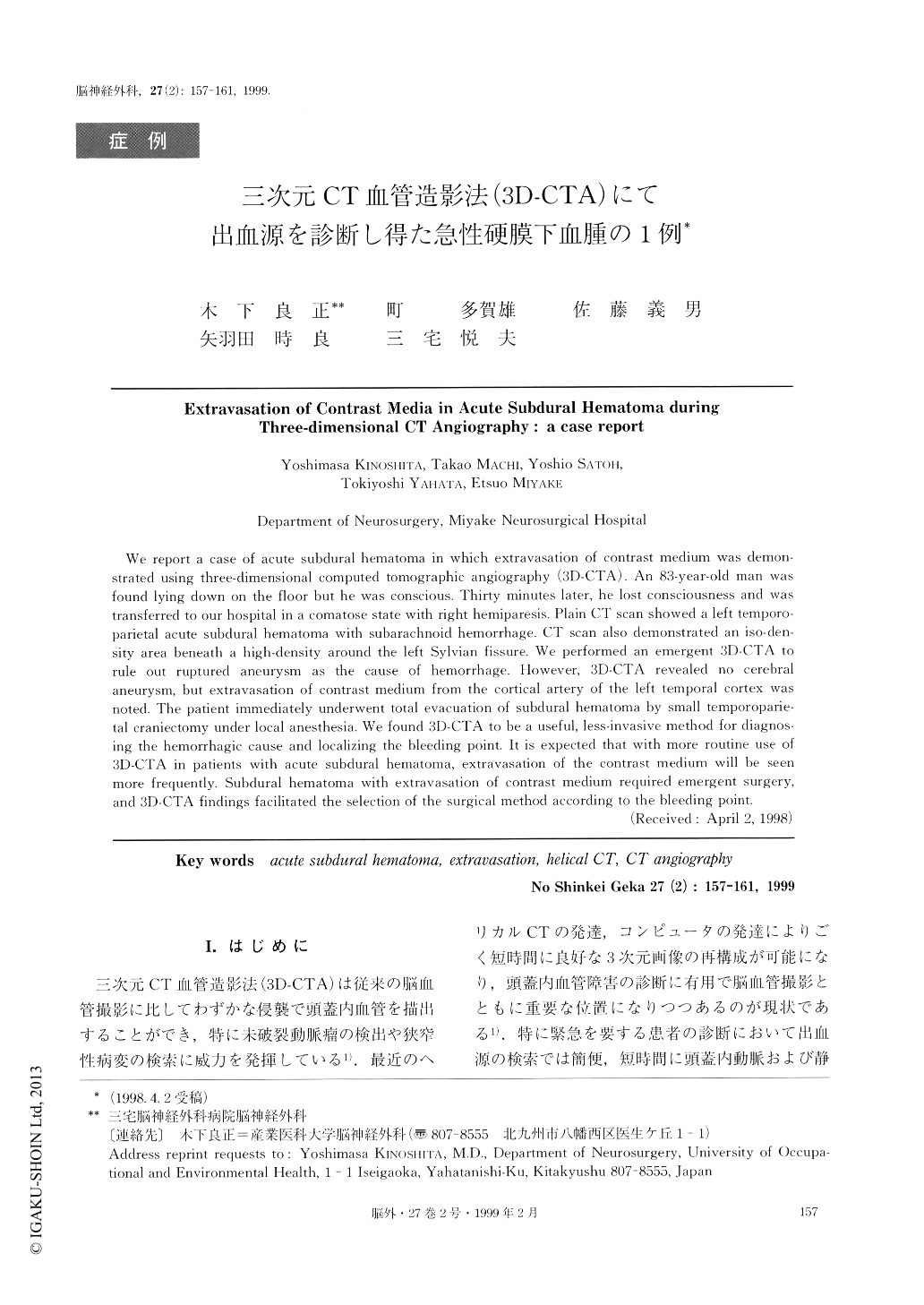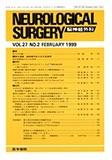Japanese
English
- 有料閲覧
- Abstract 文献概要
- 1ページ目 Look Inside
I.はじめに
三次元CT血管造影法(3D-CTA)は従来の脳血管撮影に比してわずかな侵襲で頭蓋内血管を描出することができ,特に.未破裂動脈瘤の検出や狭窄性病変の検索に威力を発揮している1).最近のヘリカルCTの発達,コンピュータの発達によりごく短時間に良好な3次元画像の再構成が可能になり,頭蓋内血管障害の診断に有用で脳血管撮影とともに重要な位置になりつつあるのが現状である1).特に緊急を要する患者の診断において出血源の検索では簡便,短時間に頭蓋内動脈および静脈を描出できる点で不可欠な検査法となりうると考えられる10).今回,われわれは高齢者の急性硬膜下血腫の出血源の検索にこの3D-CTAを使用し,本方法が頭部外傷患者の緊急診療に有用であったので症例報告する.
We report a case of acute subdural hematoma in which extravasation of contrast medium was demon-strated using three-dimensional computed tomographic angiography (3D-CTA). An 83-year-old man wasfound lying down on the floor but he was conscious. Thirty minutes later, he lost consciousness and wastransferred to our hospital in a comatose state with right hemiparesis. Plain CT scan showed a left temporo-parietal acute subdural hematoma with subarachnoicl hemorrhage. CT scan also demonstrated an iso-den-sity area beneath a high-density around the left Sylvian fissure. We performed an emergent 3D-CTA torule out ruptured aneurysm as the cause of hemorrhage. However, 3D-CTA revealed no cerebralaneurysm, but extravasation of contrast medium from the cortical artery of the left temporal cortex wasnoted. The patient immediately underwent total evacuation of subdural hematoma by small temporoparie-tal craniectomy under local anesthesia. We found 3D-CTA to be a useful, less-invasive method for diagnos-ing the hemorrhagic cause and localizing the bleeding point. It is expected that with more routine use of3D-CTA in patients with acute subdural hematoma, extravasation of the contrast medium will be seenmore frequently. Subdural hematoma with extravasation of contrast medium required emergent surgery,and 3D-CTA findings facilitated the selection of the surgical method according to the bleeding point.

Copyright © 1999, Igaku-Shoin Ltd. All rights reserved.


